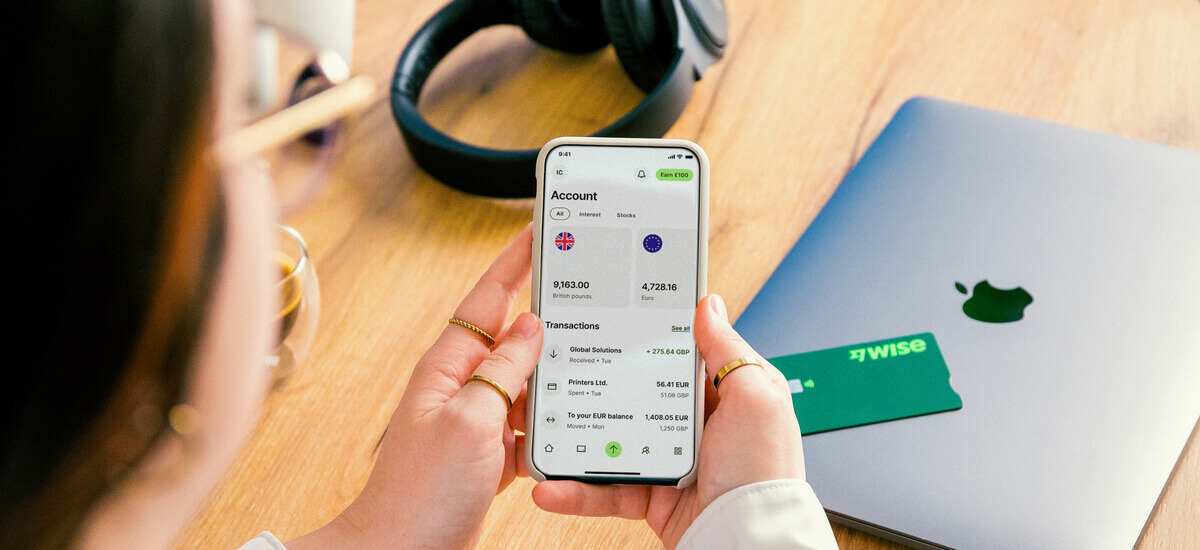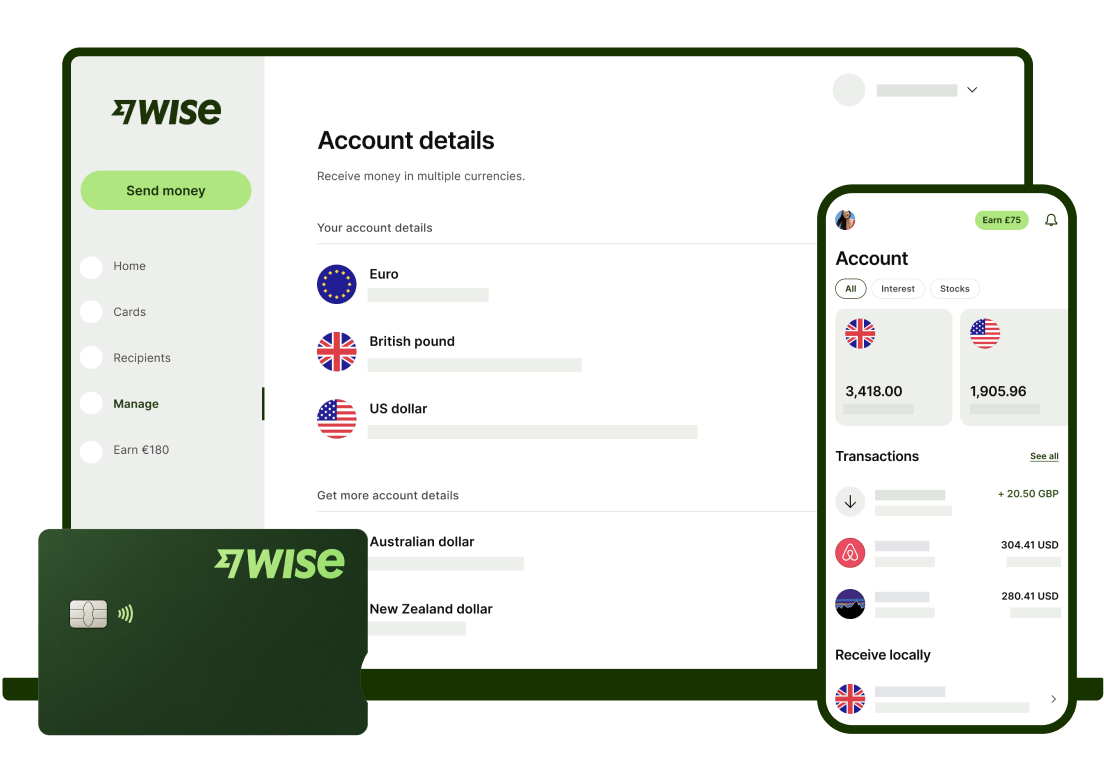Canada Tax Codes Explained - Guide for UK Employers
Check out our guide on Canada tax codes. Get to grips with tax codes by province, federal income tax rates in Canada to help with international employees.

UK Businesses are going global. No matter the size of your company, an international invoice is likely to land on your desk at some point.
You don’t expect excessive charges and complicated processes for regular invoices - so you shouldn’t tolerate it for international invoices either.
We’ve put together this guide to show you the best way to pay international invoice, and how Wise Business can help you manage your finances in multiple currencies.
💡Learn more about Wise Business
If you are unsure which is the easiest and cheapest way of paying overseas invoices then you’re not alone.
Currently, the most common way for SMEs to send money abroad is through a business bank account. But that can be costly, since most banks add a mark-up on top of the exchange rate, besides the transaction fees that may incur when you send international business payments.
Unfortunately, most SMEs are unaware that this is happening because the exchange rates mark-ups are hidden from them when the transaction takes place.
The great news is that nowadays businesses have many options to choose from. There are bank accounts, multi-currency accounts like Wise Business and international transfers providers. We'll cover those options in a moment.
But let's first check what you will need in order to pay invoices worldwide.
Being a UK business, trading with European countries can provide many opportunities, from hiring highly skilled professionals, to selling your products or services to neighbouring countries.
If you are paying a bill in Euros from the UK you will need the following details:
SWIFT/ BIC code
IBAN number
Full name of the account holder
The United States is still the biggest economy in the world. The country holds many opportunities for UK businesses trading overseas. If you hire contractors in the US or need to pay american freelancers, their invoices will probably present you the following payment details:
Routing number
Account number
Full name of the account holder
Account type
Your company will be used to paying domestic invoices through your business bank account so you might assume it’s easier to pay your international invoices in the same way.
The good news is that there are a variety of options to send money abroad and switching could save your company a lot of money and make the process easier. Let's check your options.
Banks can charge excessive fees on international payments then add secret markups when they change your currency by presenting a misleading exchange rate.
Instead of the real mid-market exchange rate - the one that gets printed in the media and can be quickly Googled - the banks show a less favourable rate to people trying to exchange money on both sides.
So if you bank with one of UK high street banks and need to pay an international invoice you will need to head to you internet banking with the supplier payment details and you may also need to provide additional information such as the supplier's address and recipient's bank name and address¹.
PayPal is another popular way for SMEs to make international payments.
Like the banks, Paypal also charges a mark-up when they convert your currency. Unlike the banks however, they deserve some credit for honesty.
They explain that transferring money from one currency to another is charged at the retail exchange rate, as well as an additional currency conversion fee on top of that. In fact, their currency conversion fee is 3% on top of the exchange rate².
When sending money abroad with PayPal other changes may also occur. Learn more about PayPal Business fees in the UK.

International payments with Wise Business are often far less complex than other payment methods. You register, verify your account, top-up in your local currencyٰٰ and you are ready to send payments to over 70 countries.
The supplier doesn’t have to sign up anywhere. For them, it’s just like receiving cash into their bank account. And it’s accepted everywhere.
To get your Wise Business account set up for paying international invoices, you’ll need to first sign up and pay a small one-time fee. When you do make those transfers, you’ll only pay a simple and transparent fee, and that’s it³.
You don’t pay any hidden charges through poor exchange rates. All deals are done at the mid-market rate – the one you see in Google. That makes Wise quite different from other forms of international payments.
Like the large banks and financial institutions, Wise Business is a safe provider, regulated in the UK and verifies its users to protect them against fraud and money laundering.
Get started with Wise Business 🚀
An invoice is a bill sent by the provider of a product or service. It contains the terms of payment, as well as all the details you’ll need to get it paid. From your perspective, it’s also called a purchase invoice. However, the seller might call it a sales invoice.
In the UK anyone providing a product or service to your business has to issue an invoice if you are both VAT registered.
Your international invoices may have a different currency and separate rules for VAT, but they will still need to comply with the same format expected for suppliers in your country.
Here are some things that should be on every international invoice you receive:
Issue date
This is usually the date the supplier sent you (or ‘raised’) the invoice.
Name and address as the supplier
They need to write their legal name and address, whether a company or an individual.
Your name and address as the purchaser
You need to make sure they use your correct legal name and address too.
Reference number
Every supplier will have their own system, but they should provide a unique number for the invoice. It is often the year followed by the number issued by the supplier that year.
Payment details
This is the most important bit if they want to get paid. An international invoice will provide you with IBAN or account number and other details accordingly with the country you are sending the money to.
Overview of items purchased
This usually includes a description of the items delivered, along with quantities and prices. This is standard for both services and products, although freelancers will usually provide the hours they worked or tasks completed.
The cost
The currency used on an international invoice is up to you and your supplier.
Company registration number
You may increasingly find yourself working with individuals, but if your supplier is a company then they may add this.
Terms of payment
Your supplier will usually add payment terms and conditions about how and when you should pay, such as the deadline by which they expect payment and a reminder to add the reference number. They might even tell you how the charge will rise if you don’t pay on time.
VAT numbers
This bit gets tricky so let’s look at that in more detail next.
VAT stands for Value Added Tax and is charged on goods and services inside the European Union.
If you are paying an invoice from another EU country - and both you and your supplier are VAT-registered - then your supplier needs to include both VAT numbers. That way, no VAT gets added to the invoice, although you’ll need to raise a reversed VAT invoice afterwards.
If you are not VAT-registered then the supplier needs to provide their VAT number and add the VAT charge applicable in their country to the invoice.
If the supplier is not VAT-registered or if either of you are outside the EU then no VAT applies and there will be no VAT number on the invoice.
This is already pretty complicated. However, there are also technical reasons VAT may be charged differently on goods being moved around so always check local regulations if you are unsure.
If you’re looking for a secure, convenient and low-cost way to manage your business finances, check out the Wise Business account.

You can open your account online or in the Wise app, and get everything you need to grow your business across borders - including the option to hold a balance in 40+ currencies, international debit and expense cards, and local bank details to get paid in 9 currencies.
Wise currency conversion always uses the mid-market exchange rate with no sneaky exchange rate markups or hidden fees - just low, transparent charges based on the services you need³. That can keep down costs.
Get started with Wise Business 🚀
Sources used in the article:
Sources last checked September 14, 2023
*Please see terms of use and product availability for your region or visit Wise fees and pricing for the most up to date pricing and fee information.
This publication is provided for general information purposes and does not constitute legal, tax or other professional advice from Wise Payments Limited or its subsidiaries and its affiliates, and it is not intended as a substitute for obtaining advice from a financial advisor or any other professional.
We make no representations, warranties or guarantees, whether expressed or implied, that the content in the publication is accurate, complete or up to date.

Check out our guide on Canada tax codes. Get to grips with tax codes by province, federal income tax rates in Canada to help with international employees.

Looking to scale your business in Scotland? Check out this guide to business grants in Scotland from start up funding to government business grants and more.

Seeking funding for your business? This guide signposts what grants are available for small businesses in the UK and tips to help ensure application success.

Looking to scale with a business grant? This guide outlines opportunities for business grants in Wales - from start up funding to Welsh government grants.

If you’re a UK employer with employees in Germany, check out our guide on German tax codes. Learn about tax laws in Germany, income tax brackets and more.

Considering starting a business in Croatia? Read this guide on Croatia company registration. Learn how Wise could help you save when doing business in Croatia.